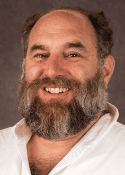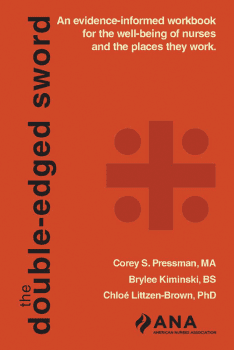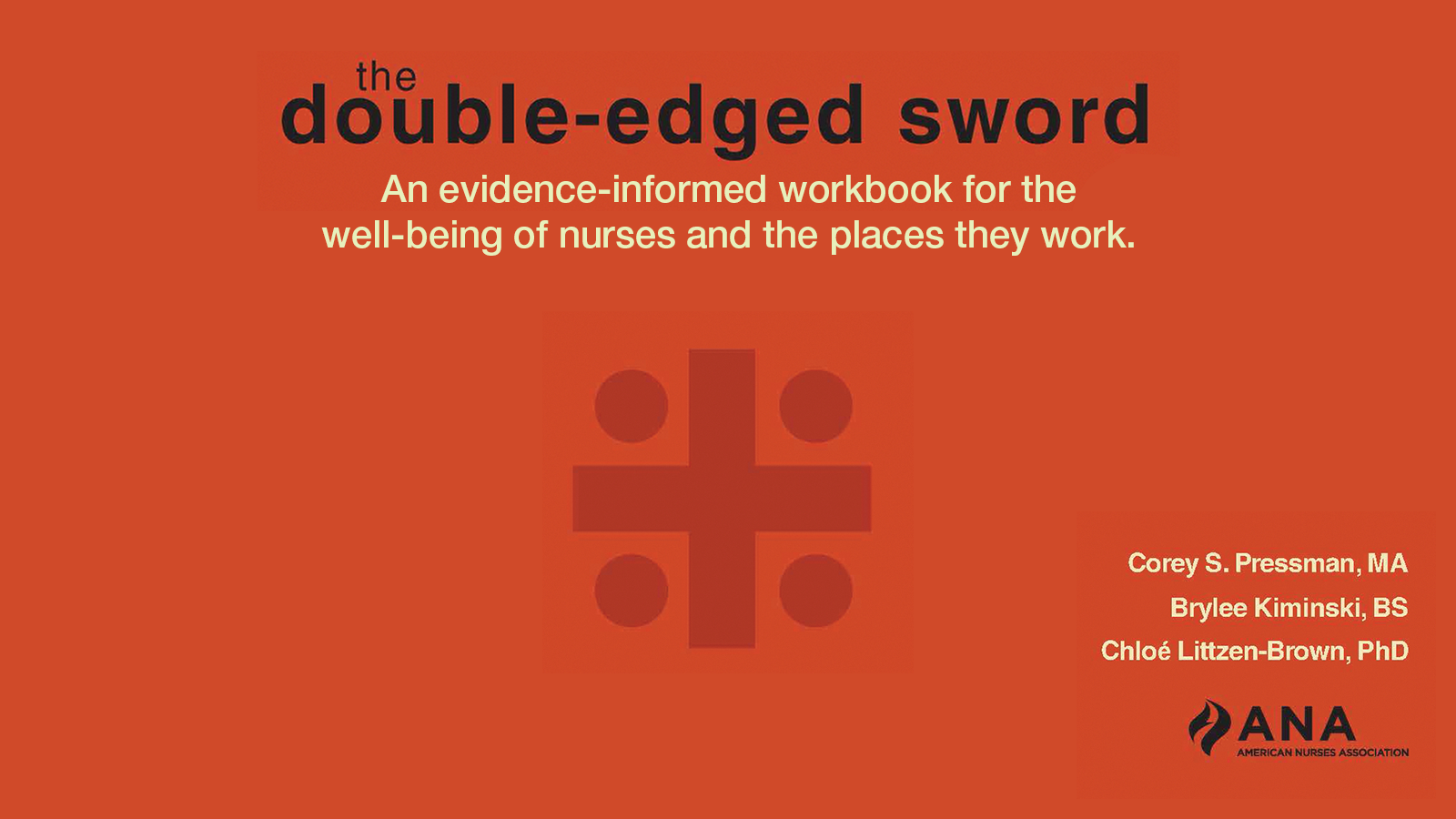To avoid compassion fatigue, embrace empathy.
The Double-Edged Sword: An Evidence-Informed Workbook for the Well-Being of Nurses and the Places They Work is a guide to understanding and addressing the root causes of nurses’ compassion fatigue. Authors Corey S. Pressman, MA, Brylee Kiminski, BS, and Chloé Littzen-Brown, PhD, RN, AE-C, an Arizona Nurses Association member, drew from their original research into nurses’ well-being and years of wellness coaching. The American Nurses Association (ANA) spoke with them about building vitality, managing emotions, and the importance of self-compassion.






What’s the difference between burnout and compassion fatigue?
Burnout and compassion fatigue are conceptually different terms that are often used interchangeably.
We define burnout as times when nurses perceive that the demands on their abilities are greater than their ability to meet those demands. Their vitality and mood are low, and their ability to function at work and in other parts of their lives is compromised. However, with burnout, a nurse can typically still provide patient care and support their colleagues.
The role of adult gerontology acute care nurse practitioners
Nurse practitioners: A vital force in healthcare delivery
Compassion fatigue is a state of complete devitalization, dissociation, anxiety, and depression. If burnout isn’t addressed, it may lead to compassion fatigue. Our workbook, The Double-Edged Sword, offers a framework that nurses and nurse leaders may use to build a practice that avoids burnout and renders compassion fatigue extinct.
How can nurses challenge the notion that nursing requires selflessness?
During the COVID-19 pandemic, nurses were expected to show up at work and place themselves and their families at risk. Now, many nurses are more burnt out than ever. For nurses to truly thrive within the healthcare system and recover from the negative impacts of the pandemic, nursing practice requires the opposite of selflessness. Providing quality care requires us to be full—full of vitality, purpose, and love. If you give your whole self away, even in the name of nursing, you’ll arrive at burnout and fatigue and be unable to do what you do—you might even leave the profession!
Would you talk about your concept of a “vital practitioner”?


What advice do you have for a nurse struggling with self-compassion?
Self-compassion is a complicated but important concept for a nurse to embody. As nurses, we often have compassion for the suffering of others, but compassion for ourselves is just as essential. Without it, suffering may be unnecessarily extended, and burnout and compassion fatigue will ultimately result. The workbook provides great exercises to build nurses’ ability to self-empathize. Without self-empathy, there is no self-compassion, and without self-compassion, we cannot grow as practitioners or as human beings.
What do you hope nurses learn?
We hope that the readers of this workbook gain a sense of validation for the difficulties of being a nurse today, along with tools to help them take back their power and thrive in practice and life. Nurses chose this profession for a reason, and we don’t want to lose them. We also hope nurse leaders find The Double-Edged Sword a useful resource and simple guide to promoting a way of working that’s as energetically and emotionally rewarding as possible (bit.ly/3IFraYG).
— Interview by Elizabeth Moore, content creator at ANA.




















